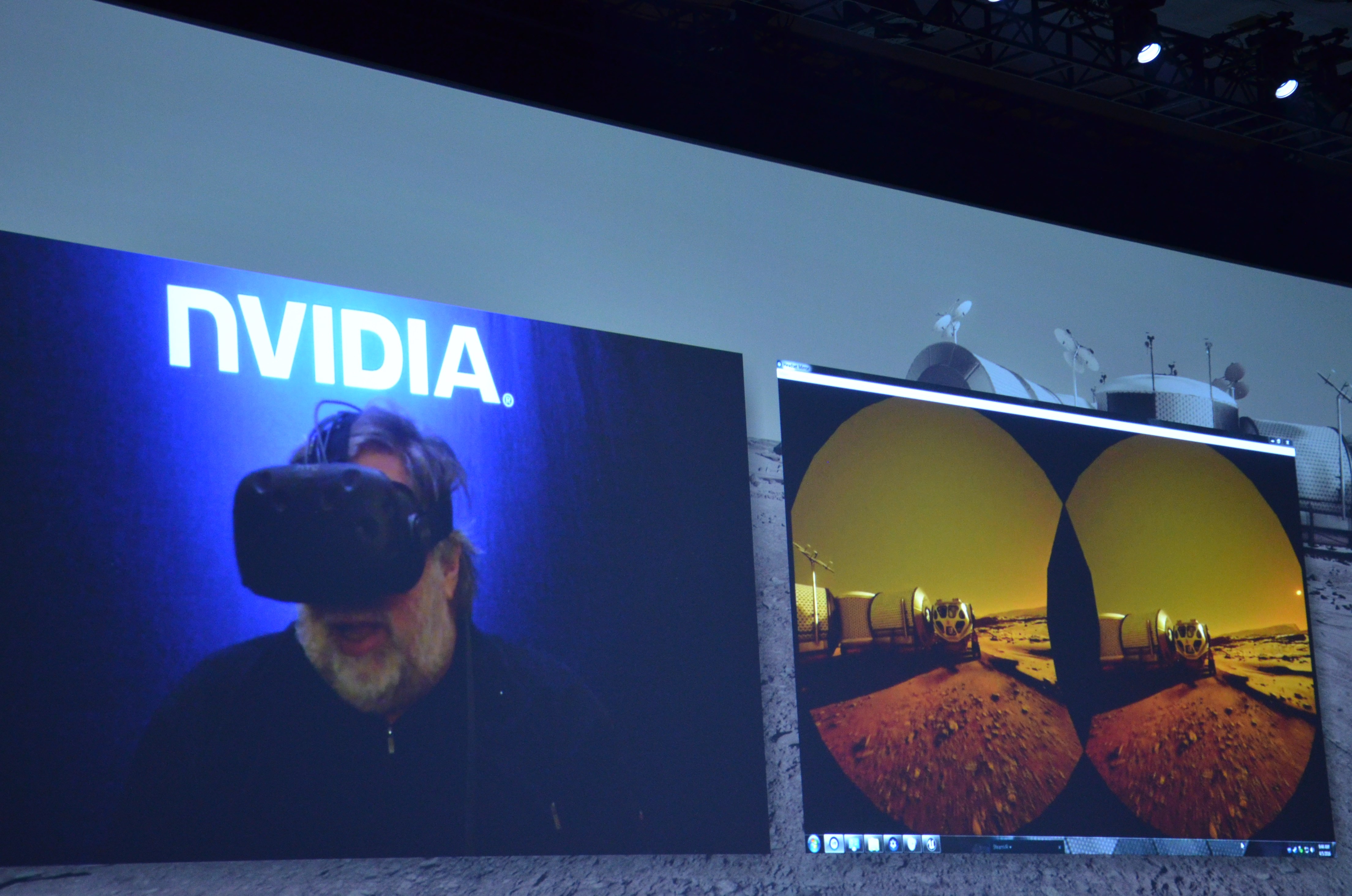GTC, May 2016 – Jen-Hsun Huang, the founder and CEO of Nvidia, one of the largest American manufacture of graphics accelerator chips, at the GPU conference, in May 2016 in California, announced that VR is going to change the way we design and experience the products. Such as shopping for cars. It is like being in virtual showroom where we can walk around our custom design car, open its door and check out the car’s interior.
At that conference took place two amazing virtual reality demos – Everest VR and Mars 2030.
For the “Everest VR” demo, Nvidia, partnered with Solfar, a Nordic VR games company, and RVX, a Nordic visual effects studio for the motion picture industry. RVX worked on movies, such as “Gravity”, which won the Oscar for Visual Effects. Using advanced stereo photogrammetry, pixel by pixel, a CGI (Computer Generated Image) model of Mount Everest was created.
For “Mars 2030” Nvidia worked with the scientists and engineers at NASA, along with Fusin VR, taking images from dozens of satellite flybys of Mars. They reconstructed 8 square kilometers of the surface of the planet. Even the rocks were hand sculptured, with millions of them being carefully placed, based on the satellite images.
Steve Wozniak, a co-founder of Apple, was invited to experience the Mars 2030 demo. As soon he slipped on his headset he was transported to a rover to drive around the planet.
Here are the key moments in VR history.
It started in 1939 at the trade show in New York City where introduced View-Master, a stereoscopic alternative to panoramic postcard. After that 30 years passed while Ivan Sutherland came up with first head-mounted display called “The Sword of Diamocles”. It passed another 30 years when the computer games company Sega introduced wrap-around VR glasses at CES in 1993. Two years later Nintendo produced the gaming console and named it Virtual Boy.
The real gold rush for virtual reality started in 2010.
That year Google came out with 360 degree version of Street View on Google Maps. In 2012 small company Oculus collected $2.4 million for a production of VR glasses. Two years after, Oculus was purchased by Mark Zuckerberg, the founder of Facebook, for $2 billion! The market research analysts from Deloitte, CCS Insight, Barclays and Digi-Capital accordingly forecast that $24 million of VR devices will be sold by 2018, and revenue from virtual and augmented reality products and content will reach to the $150 billion mark.
So far, virtual reality is associated with gaming industry sector mostly because the hard-core gaming community is willing to spend large amount of money for special purpose hardware such as VR glasses and games consoles. But that is changing. VR is appearing in different sectors of business and entertainment.
Yes, it is known that VR may cause motion sickness for some viewers and there are still a number of obstacles to work on but the technology is unstoppable now.
